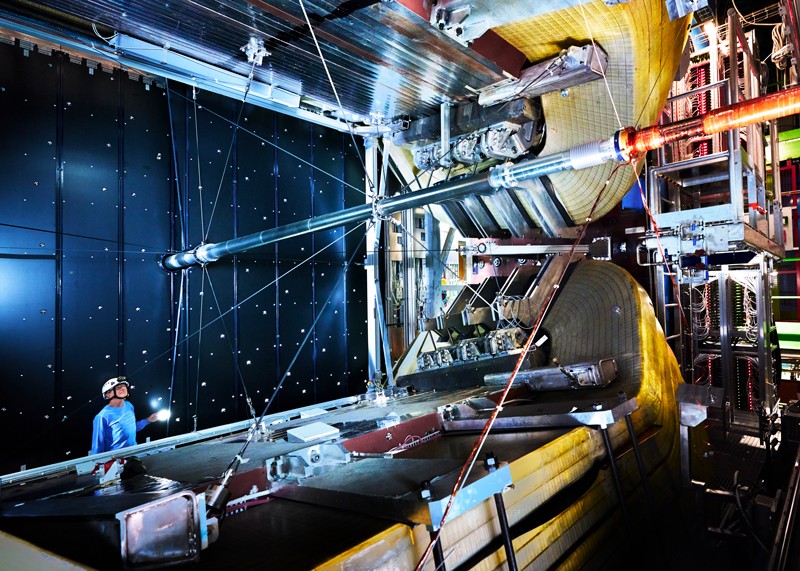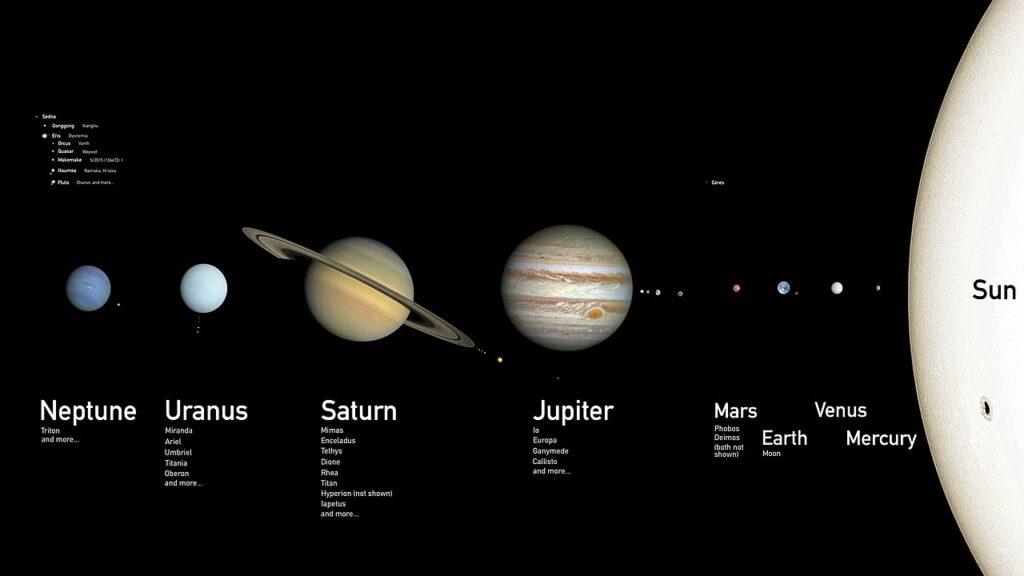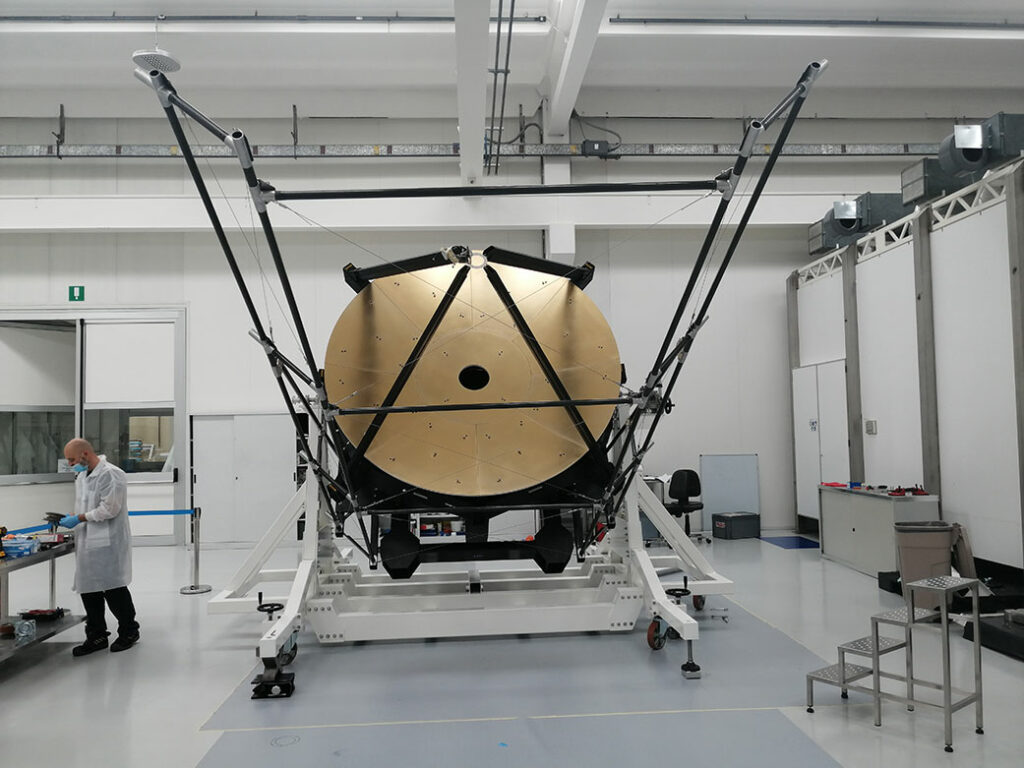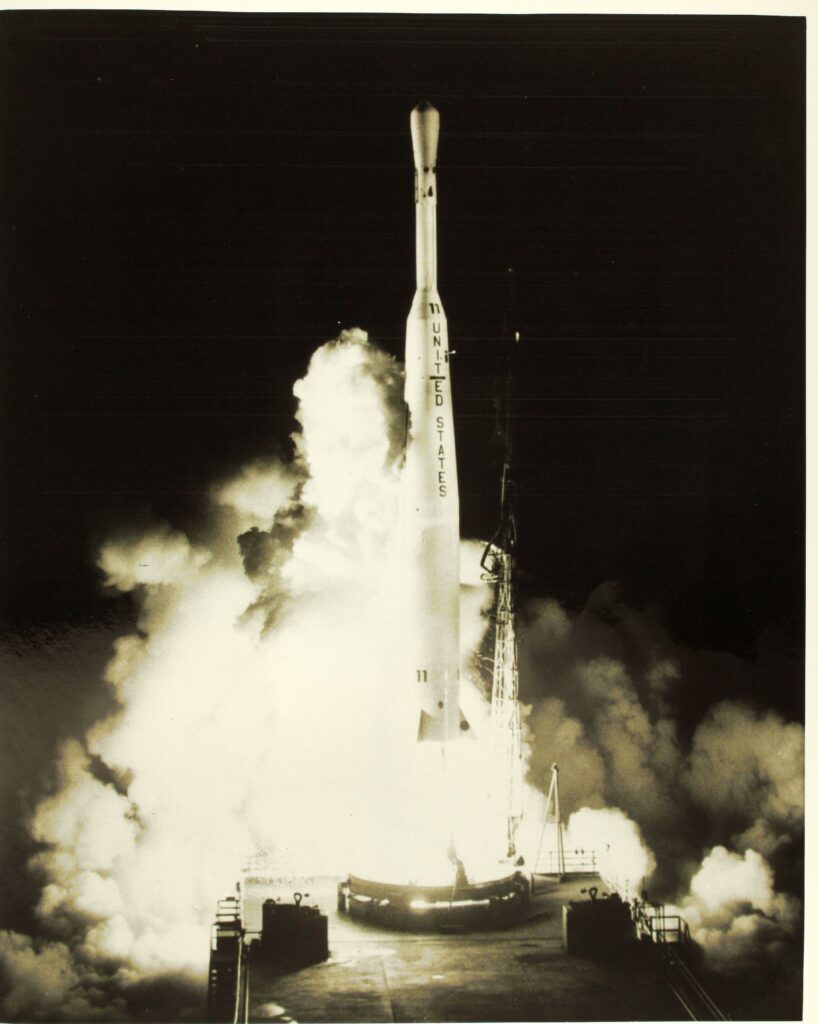While waiting for the launch and commissioning of JWST, engineers designed an infrared telescope with a 2.5-meter mirror that will fly onboard a large research balloon to nearly 40 kilometers in altitude. Plus, fast radio bursts, robotic ammonites, and this week in rocket history we look back at Telstar-1.
Podcast
Show Notes
Large Hadron Collider turns back on
- CERN press release
- Large Hadron Collider: Scientists at CERN observe three “exotic” particles for first time (Reuters via The Indian Express)
- Upgraded LHC begins epic run to search for new physics (Nature)
Using stars to probe the universe
- Caltech press release
- “The observed impact of galaxy halo gas on fast radio bursts,” Liam Connor & Vikram Ravi, 2022 July 4, Nature Astronomy
A quantum search for extraterrestrial intelligence
- Aliens could send quantum messages to Earth, calculations suggest (Science News)
- “Viability of quantum communication across interstellar distances,” Arjun Berera and Jaime Calderón-Figueroa, 2022 June 28, Physical Review D
Solar system stable for 100,000 years
- The Solar System is Stable for at Least the Next 100,000 Years (Universe Today)
- “A computer assisted proof for 100,000 years stability of the solar system,” Angel Zhivkov and Ivaylo Tounchev (preprint)
Tiny robots help understand ancient creatures
- The University of Utah press release
- “Resurrecting extinct cephalopods with biomimetic robots to explore hydrodynamic stability, maneuverability, and physical constraints on life habits,” David J. Peterman and Kathleen A. Ritterbush, 2022 July 4, Scientific Reports
A mini-JWST for a balloon mission
- NASA press release
This Week in Rocket History: Telstar 1
- Telstar 1 mission page (NASA)
- An Introduction to Satellite Communications (Google Books)
- July 12, 1962: The Day Information Went Global (NASA)
Transcript
Hey, Pamela. I seem to have really made the words go brrrr today.
Really? What do you have for us?
Let’s see. Robotic ammonites and evolutionary biology. An infrared telescope onboard a balloon. And, of course, rocket history.
That all sounds very interesting. Meanwhile, they turned the Large Hadron Collider back on.
Oh, nice!
And scientists want to use quantum communication to find aliens.
Huh. Definitely interesting.
All of this now, right here on the Daily Space.
I am your host Dr. Pamela Gay.
I am your host Erik Madaus.
And we’re here to put science in your brain.

Today’s first story comes with a reminder that astronomy is one of those rare fields where there are theorists, experimentalists, and observationalists. Theorists do the math, compute and figure out how things work, and hopefully make predictions that can be tested. Observationalists… well, we’re out there watching the sky to see what new secrets it has to reveal and testing those theories… and those rarely talked about experimentalists? They are trying to recreate the conditions of some of our universe’s weirdest and wildest parts in the lab and nowhere does this process get weirder or wilder than at CERN’s Large Hadron Collider (LHC).
Spanning the border of Switzerland and France, this nearly 27-kilometer ring of vacuum pipes and accelerating magnets speeds up particles and directs them into instruments where they collide, releasing all the kinetic energy and mass energy in a tremendous burst that allows new particles to form.
In the past, the LHC has allowed us to detect the elusive Higgs boson, which allows stuff to have mass. After several years of refurbishment, the LHC is now back to work again, crashing proton beams together at higher energies than ever before while allowing more data to be measured than ever before. The search is on for particles that prove – or disprove – the standard model of particle physics or its competing theories like supersymmetry. The search also continues for particles that might form that elusive dark matter we see only from gravitational effects.
The LHC first fired back up in April, but it was only on July 5 that it was turned all the way up to see just what can be found. The initial full power firing didn’t have the proton beams cranked all the way up, yet; researchers started at a lower intensity to allow for calibrations, but so far so good.
So good in fact, that despite warning everyone that discoveries and results could take months to make, you may have seen announcements that new particles had already been found! Here, we have to disappoint you.
The good folks at Reuters correctly noted that in a seminar yesterday, researchers highlighted particles that have been discovered in the past few years – tetraquarks and pentaquarks – and discussed a new naming scheme. That seminar was on July 5 and discussed old data, while the LHC powered up to collect new data. Science takes time, and there is a certain poetry in the results of the old data getting headlines on the day new data is being collected.
We can expect more new particles to be announced in the next few months and years. As those results come out, we’ll bring them to you here on the Daily Space.

Most astronomy can’t be done in a lab — not even a lab big enough to span countries. But we observational folks still find ways to probe the universe, and in a new paper in Nature Astronomy led by Liam Connor, researchers discuss how they are now using fast radio bursts (FRBs) to search for material in the outskirts of galaxies.
Their study reviews 474 of these brief, powerful bursts that were detected by the CHIME radio array in Canada. In this data set, they found that 24 FRBs shined light through the outskirts of galaxies. This was revealed in interactions between the radio pulses and the gas in the galaxy’s halo. As the radio light hits the gas, interactions can disperse the light, changing its frequency and delaying its arrival at our detectors. How much the gas affects the fast radio burst reflects the density and volume of the gas – essentially allowing us to measure physical properties far off in the universe.
According to Connor: Our study shows that FRBs can act as skewers of all the matter between our radio telescopes and the source of the radio waves … We have used fast radio bursts to shine a light through the halos of galaxies near the Milky Way and measure their hidden material.
These 24 FRBs are a fairly small sample, but it is one we expect to see exploding in size. FRBs were only discovered in 2007, and numerous surveys and new instrumentation are planned to help make their discovery more efficient. Once enough systems have been probed that we can start to draw conclusions about the halos of galaxies, we’ll let you know.
FRBs, of course, held some interest for scientists working on the search for extraterrestrial intelligence, until the cause was determined to be nature-made rather than a technosignature. And now a group of researchers has published a paper in the Physical Review D that talks about looking for quantum messages.

I know it sounds a little Ant-Man-ish, but quantum communication is an up-and-coming field. Messages sent using this method could be more secure. Per the new paper with co-authors Argun Berera and Jaime Calderón Figueroa, X-ray photons could potentially traverse the distance of the Milky Way without losing their quantum state, which happens when quantum particles interact with their surroundings.
And that brings us to another rather Ant-Man term: quantum teleportation. This process occurs when a distant particle transfers its properties to another particle. Scientists could use both the quantum signals and the more classical, narrowband signals to look for simultaneous communications as technosignatures.
Again, this is all theoretical, and now we need experimentalists and engineers to figure out the actual method for detecting quantum signals.
Coming up next, simulations, robotics, and telescopes.
I feel pretty comfortable, as an astronomer, saying that nothing in this universe is forever except energy. Even black holes will eventually evaporate away.

As a human being with a life expectancy of 70-some-odd years, it is hard to worry about the death of black holes trillions of years from now, but as a human interested in the fate of humanity, the stability of our own solar system is something easier to worry about, if you are looking for something new to worry about. If you are looking… Why?
While climate change doesn’t offer a lot of hope, there are more worlds than this, and according to new models from Angel Zhivkov and Ibaylo Tounchev, the other worlds in our solar system should be stable for the next 100,000 years. They ran millions of simulations that looked at the gravitational interactions of the eight main planets and classic planet Pluto. They found their models are most sensitive to errors in mass and position, but find that within expected errors, our solar system is expected to be stable.
So, in a world where everything seems to be topsy turvy, we can count on orbits to remain stable… for at least 100,000 years.
We talked recently about robots used for a lunar simulation. Today’s story also involves robots, but for evolutionary biology – the study of how animals evolved over time.
A team from the University of Utah’s Department of Geology and Geophysics created robotic ammonites. Most closely related to modern squid and octopus, these animals used to fill oceans for hundreds of millions of years before dying out with the land dinosaurs at the end of the Cretaceous period.

Scientists are studying these animals as an example of natural selection. Based on their shell’s awkward shape and size they shouldn’t have been as successful as they were. Many different variants of shell shapes are preserved in the fossil record, in many different environments and times. The researchers picked three different shapes to represent a spectrum of possible shell types. One was cone-shaped, and another was almost spherical. The third was in the middle. The shells were then 3D printed, which required the 3D printed shell to be watertight, both to preserve the intended buoyancy of the test article and protect the electronics.
The researchers did a dozen runs of each shell type in a pool at the university, filming each run and plotting it in 3D coordinates. No single shape was good at everything. As researcher David Peterman noted, trying to find the best shape for all situations is not the right question, saying: The idea that one shape is better than another is meaningless without asking the question—‘better at what?’.
The narrower shell was faster and more stable, but could not change directions easily. The round shell was slower but could change directions more easily. Each animal likely evolved the shell shape needed for its specific environment.
From technology on a very small scale, we now turn to technology on a larger but still relatively small scale.
Wednesdays are for rocket history, but this next story involves not a satellite or even a sounding rocket. In a sense, it’s yet another story of scientists coming up with unique solutions to observations that could only be done by That Telescope. Speaking of That Telescope, the first science images from JWST are expected to be publicly released on July 12, and we’ll be here covering that release live on twitch.tv/cosmoquestx.

So what do you do if you need infrared observations but with something bigger than a sounding rocket and the telescope which has been delayed for 20 years still hasn’t got to it? You build a telescope for a stratospheric balloon, like the team on the Astrophysics Stratospheric Telescope for High Spectral Resolution Observations at Submillimeter-wavelengths (ASTHROS) have done. Naturally, there are some constraints with this approach.
JWST has its mirror segments mounted on movable struts for ease of alignment and the ability to adjust it on the fly in the event of any problems – including such problems as being hit by a micrometeoroid. Of course, this design is not possible with an atmospheric balloon. For ASTHROS, each of the 2.5-meter mirror’s nine segments needs to be aligned on the ground. And the balloon can only lift so much, so the telescope’s support structure must be as light as possible while still very rigid to keep the mirrors aligned. By the way, that 2.5-meter mirror? It’s one of the largest telescopes ever put on an atmospheric balloon.
NASA missions are well known for using innovative techniques, but this telescope was made by an established company, Media Lario. This company made the primary mirror segments for the Atacama Large Millimeter Array’s telescopes, so they have experience making infrared telescopes.
What is new is the support structure, and this is where the innovation comes in. Media Lario worked with other Italian companies that made high-performance racing sailboats out of carbon fiber. Carbon fiber provided the lightweight but high-strength material that the team needed for the ASTHROS telescope.
So what will ASTHROS, with its large mirror and racing sailboat structure, actually be used for? How galaxies die. That sounds dramatic, but it’s pretty simple. As a galaxy evolves, the gas and dust that are usually pulled together to form new stars are blasted apart so that new stars eventually stop forming. This process is called stellar feedback because it is caused by the already established stars when they eject mass or erupt in a nova or supernova. Infrared wavelengths are necessary to see into these dense gas and dust clumps.
The telescope will launch in December 2023 for a one-month mission around Earth’s South Pole.
And now, it’s time for rocket history.
This Week in Rocket History

We rely on communications satellites for a lot of modern conveniences, but they didn’t exist until the mid-twentieth century. This Week in Rocket History is the story of the first practical active communication satellite, Telstar 1.
Telstar 1 launched on July 10, 1962, on a Thor-Delta rocket from LC-17B at Cape Canaveral Air Force Station in Florida. The satellite was launched into a highly eccentric orbit between about 1,000 kilometers to about 6,000 kilometers inclined just under 45 degrees to the equator. Telstar 1 was built for AT&T as part of a multinational agreement among AT&T, Bell Telephone Laboratories, NASA, BPO in the United Kingdom, and the National PTT in France.
Telstar 1 was a 77-kilogram spin-stabilized satellite that used fixed orientation solar panels. It had only one transponder, compared to the dozens found on modern communication satellites, and that transponder was relatively low power – only 2.25 watts – while it transmitted over very long distances.
There were three ground stations supporting Telstar 1: One in Andover, Maine; one in Goonhilly Downs in the UK; and one in Pleumeur-Bodou in France.
The U.S. and French ground stations that communicated with the satellite each had a massive dish that was over 50 meters in diameter and weighed about 450 U.S. tons. The Goonhilly Downs station in the UK was a much smaller dish, measuring 26 meters in diameter. This smaller design, which used a parabolic dish, was the model on which all subsequent satellite dishes were based. Modern satellite dishes are small enough to be put into planes.

To save time, Telstar used frequencies already being used by line of sight microwave relays. Signals sent up to the satellite were modulated when the satellite sent them back, mainly to reduce the power needed and also prevent feedback interference. However, this required more bandwidth, an acceptable tradeoff for the first generation satellite that would be improved in subsequent satellites.
Telstar accomplished many historic firsts, including the first live television transmission between the United States and several European countries. The broadcast was only thirty minutes long due to the limited time the satellite was in view of both ground stations at the same time. Also, the picture quality wasn’t very good, but that was understandable under the circumstances.
Telstar 1 also included two scientific instruments which measured high-energy protons and high-energy electrons in the Van Allen radiation belts.
The satellite functioned for seven months before succumbing to radiation damage to its components caused by the Starfish Prime high-altitude nuclear test that created a human-made radiation belt at 400 kilometers altitude. This test was ironically the day before Telstar 1 launched. Oops.
To date, there have been 23 Telstar satellites launched to orbit, including the first one. Telstar 2 was basically identical to its predecessor but functioned for much longer. It was turned off in 1965, two years after launch, with no major problems. All of the following Telstars, starting with Telstar 301, launched twenty years later, have been placed in geosynchronous orbit, and they have become increasingly larger. The most recent Telstar 19V satellite is the biggest communication satellite ever launched — 92 times more massive than Telstar 1.
As of early July 2022, Telstar 1 is still in orbit.
Statistics
And now, for some statistics.
The number of toilets in space is eight: four on the ISS, one on Soyuz MS-21, one on the Crew Dragon Freedom, one on Tianhe, and one on Shenzhou 14.

We keep track of orbital launches by launch site, also called spaceport. Here’s that breakdown:
USA 35
China 21
Russia 5
Kazakhstan 4
New Zealand 4
India 1
Iran 1
South Korea 1
From those 72 launches, a total of 1,116 spacecraft were put into orbit.
Your random space fact for this week is that the droid bounty hunter IG-88 from Star Wars Episode V: The Empire Strikes Back uses a combustion chamber from a Rolls Royce Derwent jet engine as his head.
This has been the Daily Space.
You can find more information on all our stories, including images, at DailySpace.org. As always, we’re here thanks to the donations of people like you. If you like our content, please consider joining our Patreon at Patreon.com/CosmoQuestX.
Credits
Written by Pamela Gay, Beth Johnson, Erik Madaus, and Gordon Dewis
Hosted by Pamela Gay, Beth Johnson, and Erik Madaus
Audio and Video Editing by Ally Pelphrey
Content Editing by Beth Johnson
Intro and Outro music by Kevin MacLeod, https://incompetech.com/music/


 We record most shows live, on Twitch. Follow us today to get alerts when we go live.
We record most shows live, on Twitch. Follow us today to get alerts when we go live.